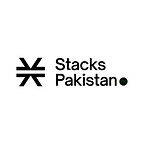Blockchain As A Link
The world has been seeing headlines regarding cryptocurrencies, as well as uprisings and downfalls in the values of these so-called currencies of the future. People continue to be intrigued by these currencies that claim to be free of any state’s powers and have the ability to transform global economic ecosystems. But there is a factor that runs parallel to all the excitement and hope; feasibility. Is the world not functioning well? Or is there something broken about our current methods and approaches to economic and financial dealings? And why do we need to ‘fix’ things by using a technology that has not found full mainstream application yet?
The answers to all our questions regarding blockchain, its long-term and short-term advantages and potential harms lie in a simple word; future. The days of computers being limited to our work and home only are long gone. If we look closely, today we are surrounded by a network of programmable material that demands nothing but connectivity. A web of machines and devices that makes sure that our work-life balance remains perfectly aligned and that all our simple chores get the most efficient solutions. The existence of such a web of devices can only come into effect due to faster connectivity and better hardware.
While the practical image of computers has changed and as computer chips become a part of almost every appliance around us, the maintenance of such a system requires a change from every angle. The idea of connectivity needs a shift in its birthplace i.e., the internet.
From the time of dial-up modems to the testing of 6G networks, the phenomenon of ‘global village’ is becoming a reality with every half a decade.
As computer scientists and network engineers talk about the imminent emergence of a global network that has never been witnessed, there comes along a long list of required tools. To continue working on the checklist of our web 3.0 goals, we must put a circle around blockchain.
Blockchain tech acts as the backbone of a web 3.0 ecosystem, because it embodies the idea of user-owned internet. With its design, blockchain makes the whole equation seem more and more realistic.
As the system stores information in different blocks and then continues to link those blocks to form a chain, hence the term blockchain. The idea seems pretty simple, but is a revolutionary one.
As blockchain tech operates independently, thanks to its open-source nature, it frees the users from any third party-interference. Bitcoin being the market leader and the greatest application of blockchain, provides its users with a distributed ledger. A digital storage entity that keeps a record of all the transactions that take place on it, of course stored in blocks and distributed among all the users.
This way, blockchain makes sure that nobody plays foul and that the approval of every transaction takes the users on board.
While we continue to chant the slogans of freedom, our web 3.0 tool shall bring ease on numerous practical levels. As we move towards the Semantic Web, we shall need a sort of global currency, that will be free of stamps, signatures and pictures of historic monuments. A method to pay your bills, receive salaries, make reservations, and shop online, through your online wallet is a thought that excites us all. But if we add the idea of a currency that transcends the limits of our current economic environments is one that entices our imagination and keeps us hopeful for a better future even more.
A type of currency that enables each and every human being to be a part of online commerce and trade, without the bounds of national or provincial borders.
Cryptocurrencies like Bitcoin, Ethereum and Dogecoin owe their existence to blockchain tech as the new method of trade makes its way into the mainstream. Blockchain not only opens new doors of exchange, but brings forth limitless options for the integration of finance and tech.
Written By: Humza Noor
